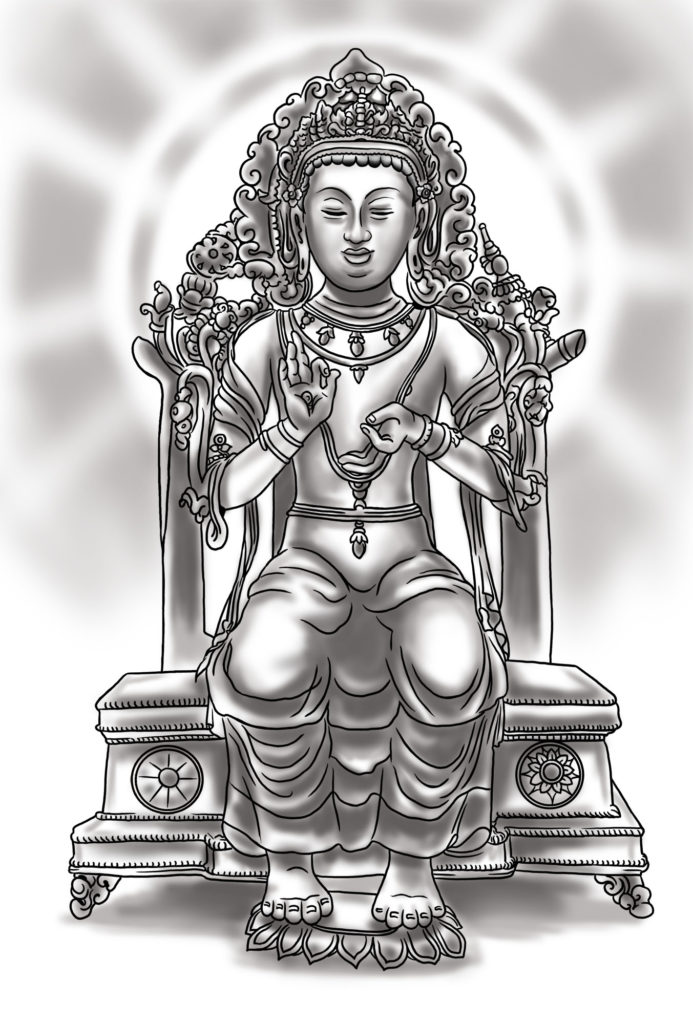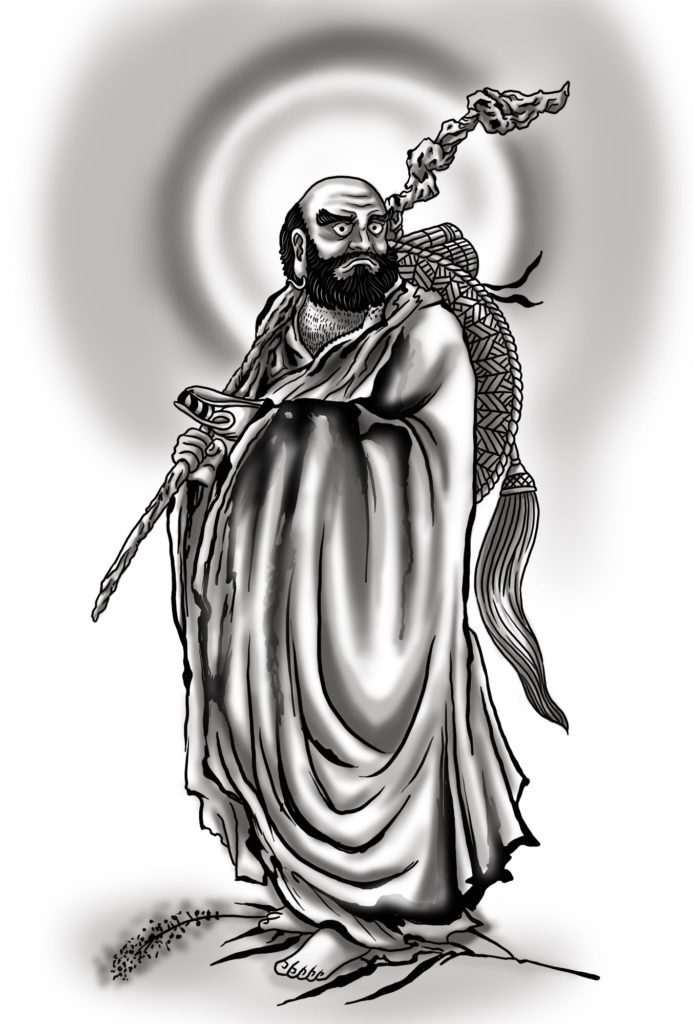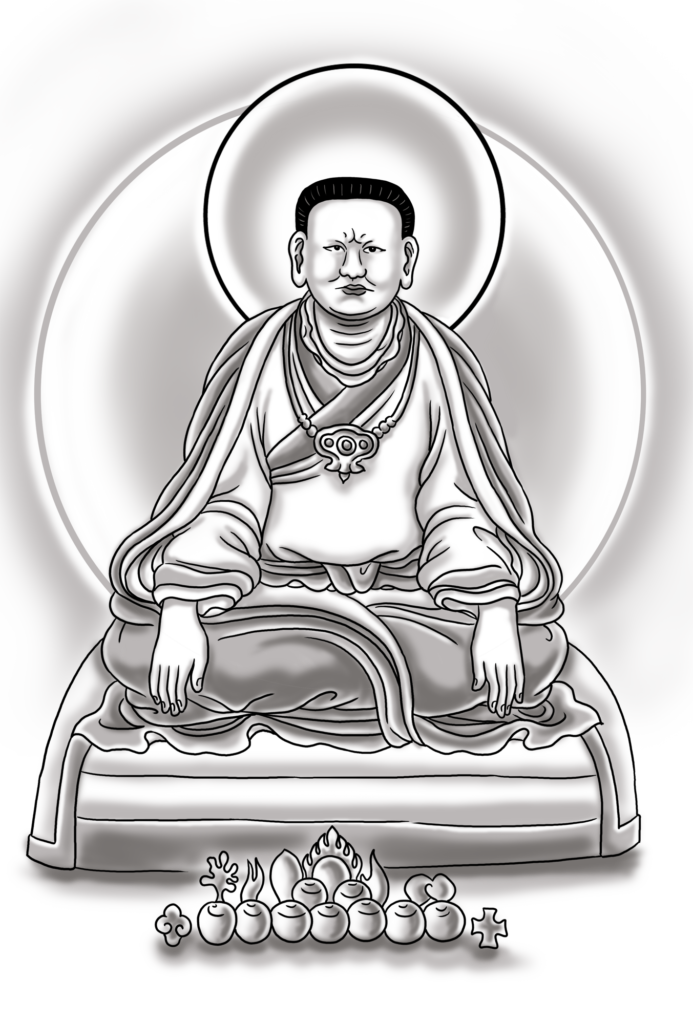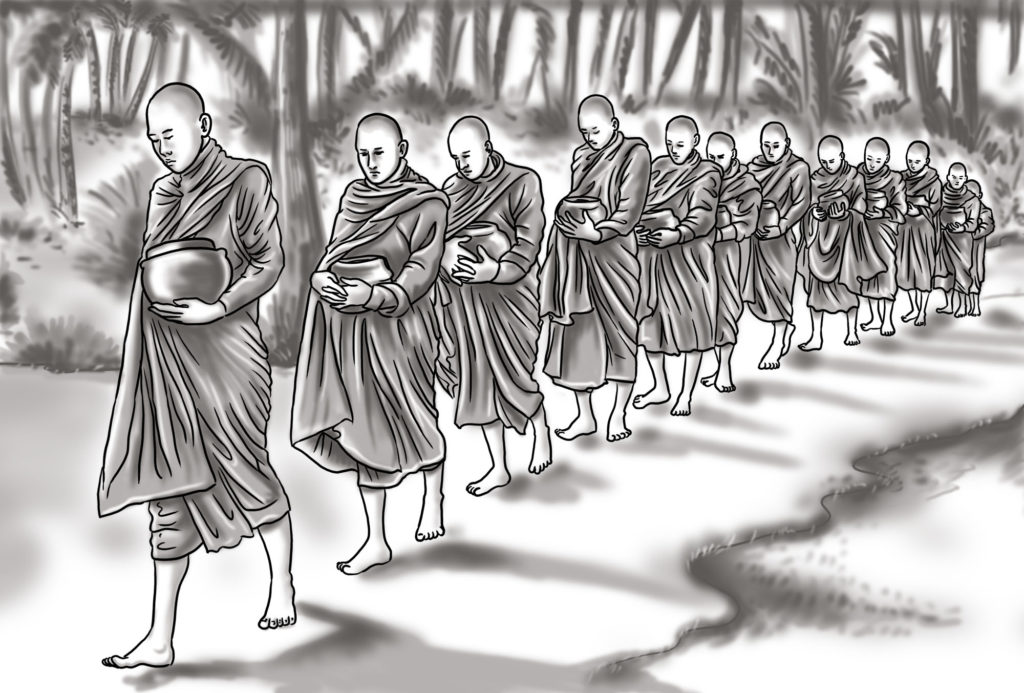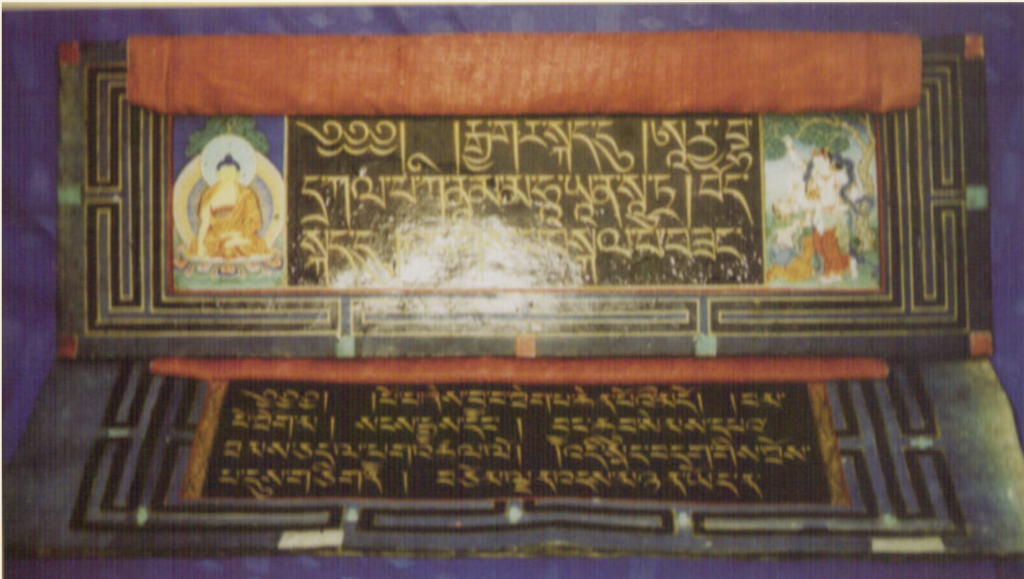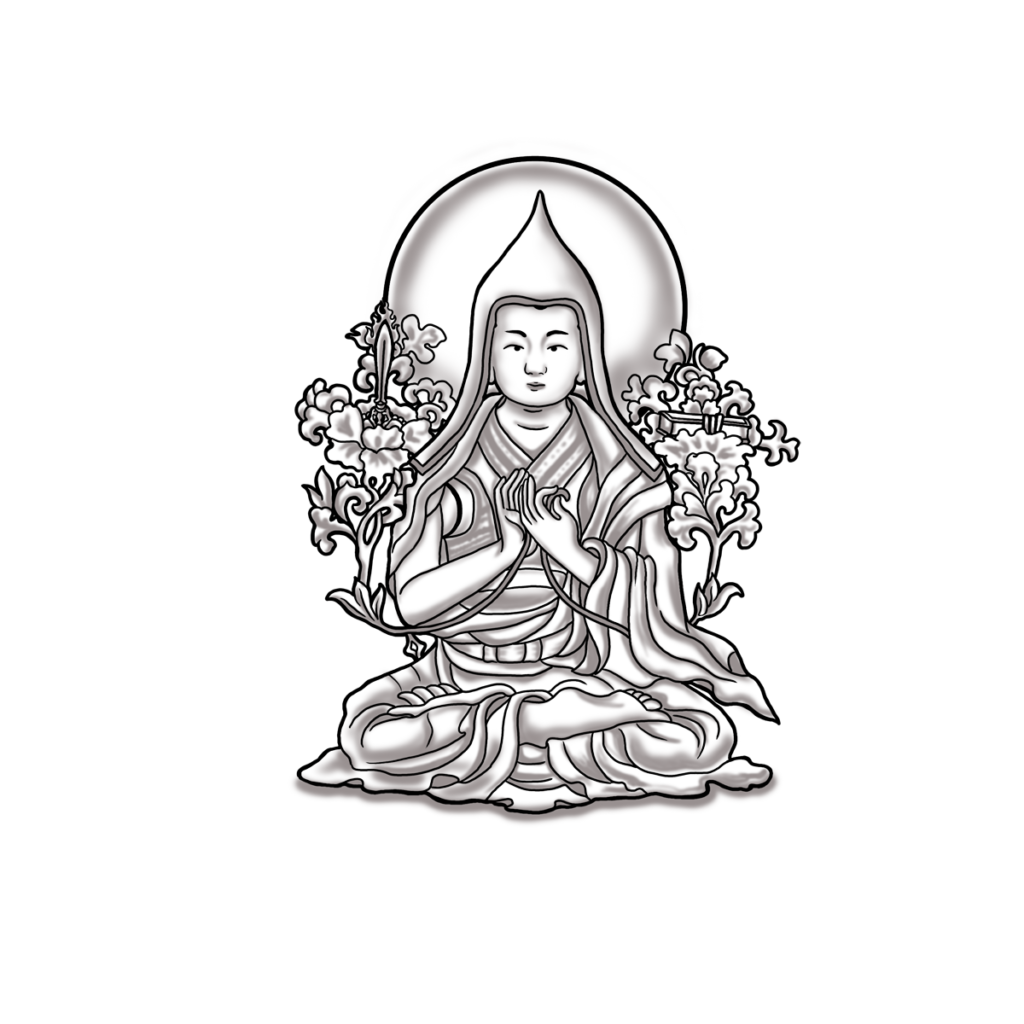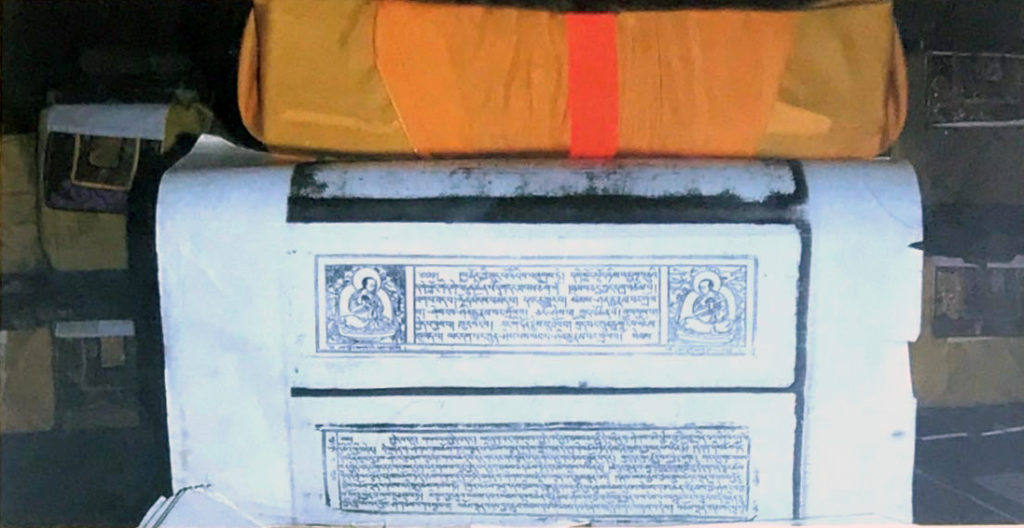A Timeline of the Kangyur
20 November, 2020 2021-01-11 6:02A Timeline of the Kangyur
A Timeline of the
Kangyur
The history of the Kangyur is a fascinating journey through time and across many continents and technologies. Here is a visual timeline of the Kangyur from the Buddha to the present day work being done on Adarshah.
Enlightenment of the Buddha Shakyamuni
The Shakyamuni Buddha spent about 45 years teaching the dharma in India to a diverse range of people from servants, nobles and his own disciples. No written records have been found from his lifetime.

First Buddhist Council
First Buddhist Council was held at Rajgir, Bihar, India after the Parinirvana of Shakyamuni Buddha under the patronage of King Ajatasattu. The teachings of the Buddha were rehearsed soon after his death by a fairly representative body of disciples. The later systematized threefold division of Sutra was spoken by Ananda, Vinaya spoken by Upali and Abhidharma by Maha Kashyapa. The early Buddhist disciples appear to have remained united. All the teachings were preserved as an oral tradition.

Second Buddhist Council
After the Buddha had passed into parinirvana for 110 years, 700 Arhats gathered in Kushmapuri Monastery, Vaishali often known as “the gathering of the 700”. This event was sponsored by the King Harshavardhan of Lichvi. Discussions at this council include debates on the contents of the Vinaya.

Third Buddhist Council
According to the Kashmiri, it is said that the Third Buddhist Council was convened by Ashoka of 500 Arhats, 400 bhikshus and 500 bodhisattvas in Pataliputra. This is when the Vinaya was written down completely. The remainder of Prajnaparimita and Abhidharma was also written down. According to the Jalandhara, the third buddhist council took place in Kushana and convened by King Kanishka. The modern Pali Tripitaka is essentially complete at this time.

King Kanishka
Reign of King Kanishka. Mahayana Buddhism spreads to Central Asia. Buddhist texts written down in Sanskrit.
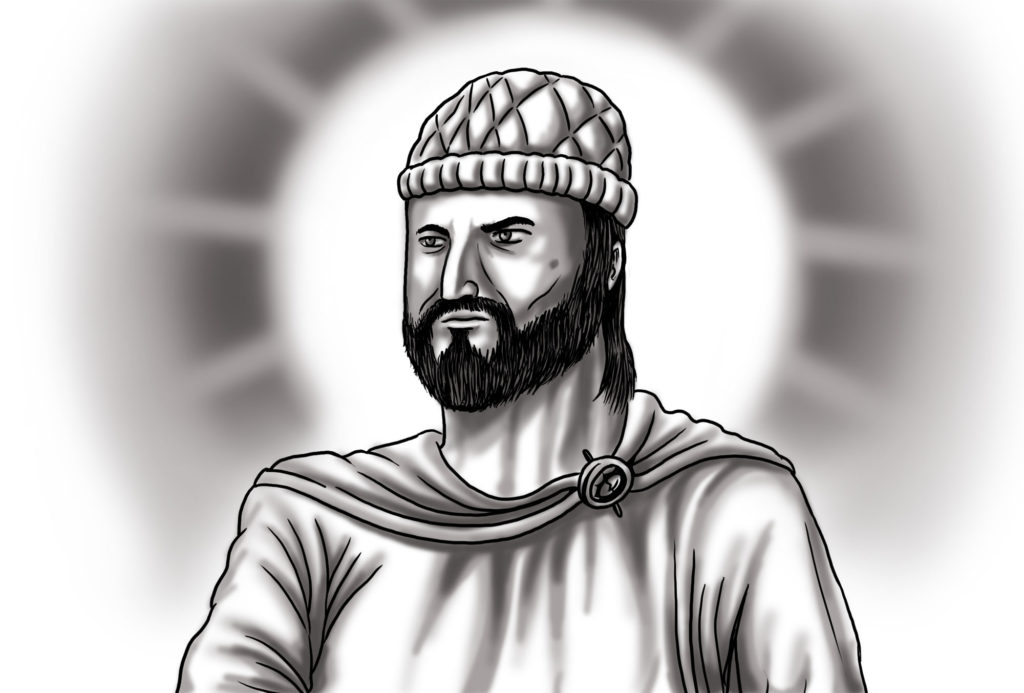
Mahayana Buddhism
Rise of Mahayana Buddhism. Composition of Prajnaparamita literature.

Scriptural Canon Written on Palm Leaves
Entire scriptural canon of Theravada School was committed to writing on palm leaves in Pali at the Aloka Cave, near Matale, Sri Lanka
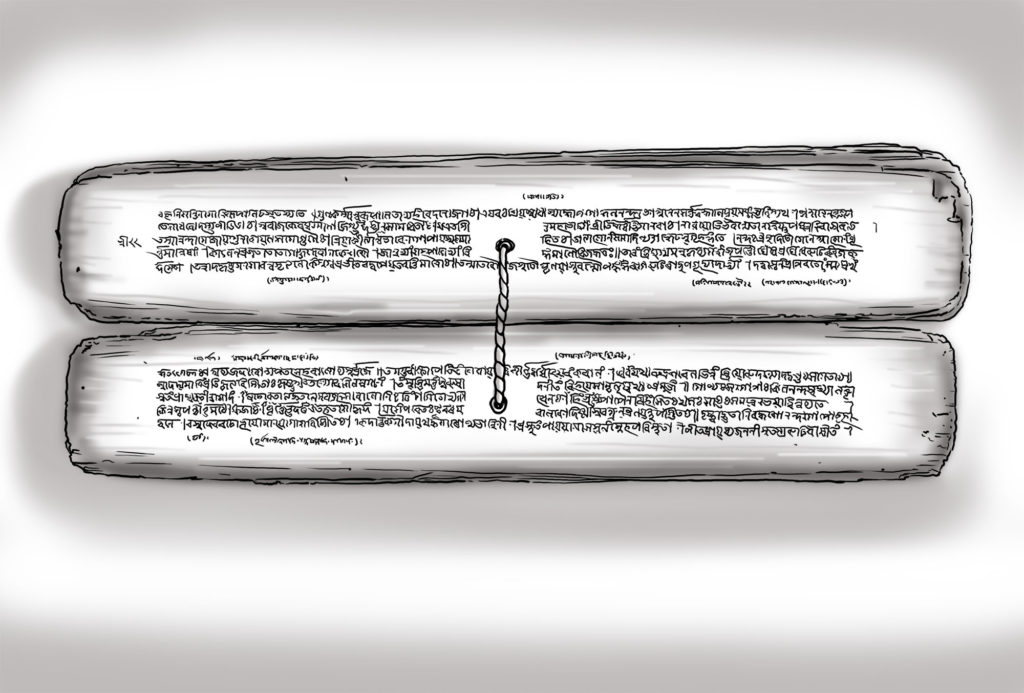
Buddhism Enters China
Two masters from India, Dharmaratna and Kāśyapa Mātnaga, led a white horse carrying precious Buddhist scriptures thus bringing Buddhism into China. In 148, An Shigao, a Buddhist translator establishes a translation center in Luoyang, China.

Composition of Mahayana texts
Composition of Lotus Sutra and other Mahayana Buddhist texts.
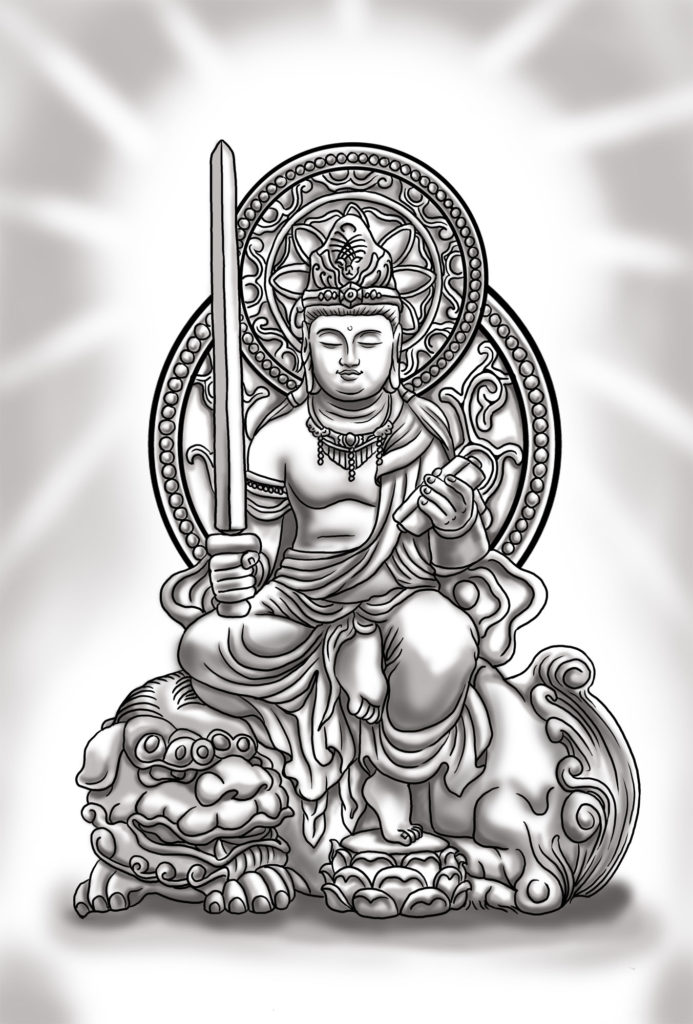
Nagarjuna
The age of Indian Buddhist philosopher Nagarjuna, founder of the school of Madhgamika (the Middle Way)

First Buddhist Manuscript
The oldest manuscript of Buddhist scriptures in existence is the fragment of Buddha-savgīti held at the Lushun Museum of Dalian. This manuscript was excavated in Turpan, Xinjiang and belongs to the ancient Loulan Kingdom. The sutra was translated by Dharmaraksha, a master from the Yuezhi Kingdom in the 2nd century Western Jin Dynasty.
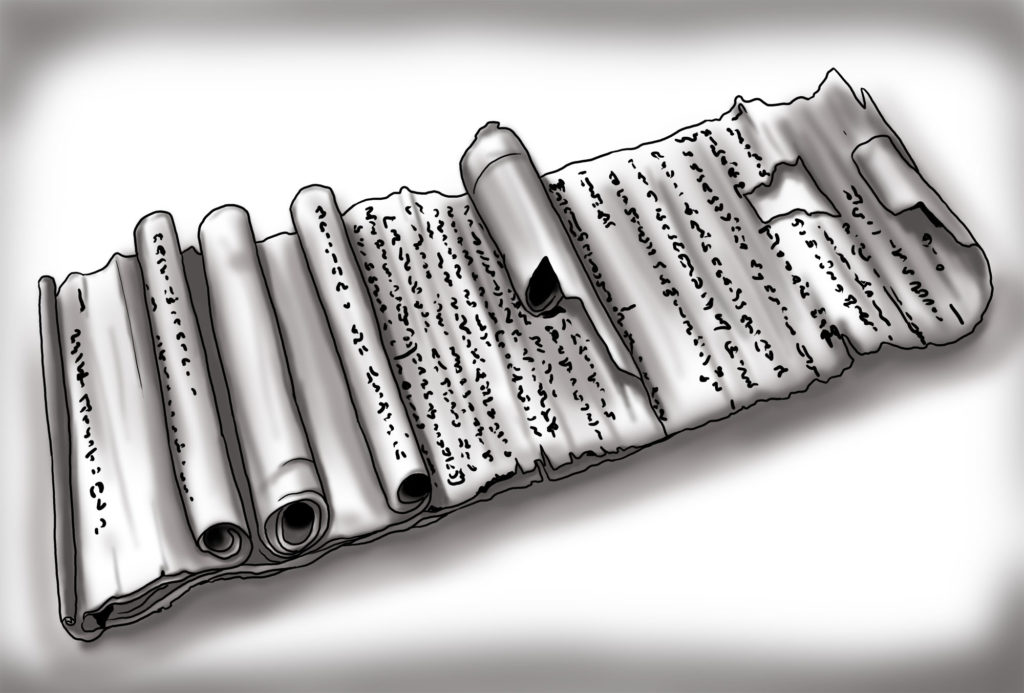
Asanga and Vasubandhu
Asanga and Vasubhandhu were brothers. The Yogacara School was founded by Asanga and the teachings were widely spread by Vasubhandhu.

Translation of Texts into Chinese
Kumārajīva (344-413) was born in the Kuci kingdom and was a great translator of Chinese Buddhist texts. His works include the Mūlamadhyamakakārikā, The Treatise on the Great Perfection of Wisdom and Sad-dharma Puṇḍárīka Sūtra.
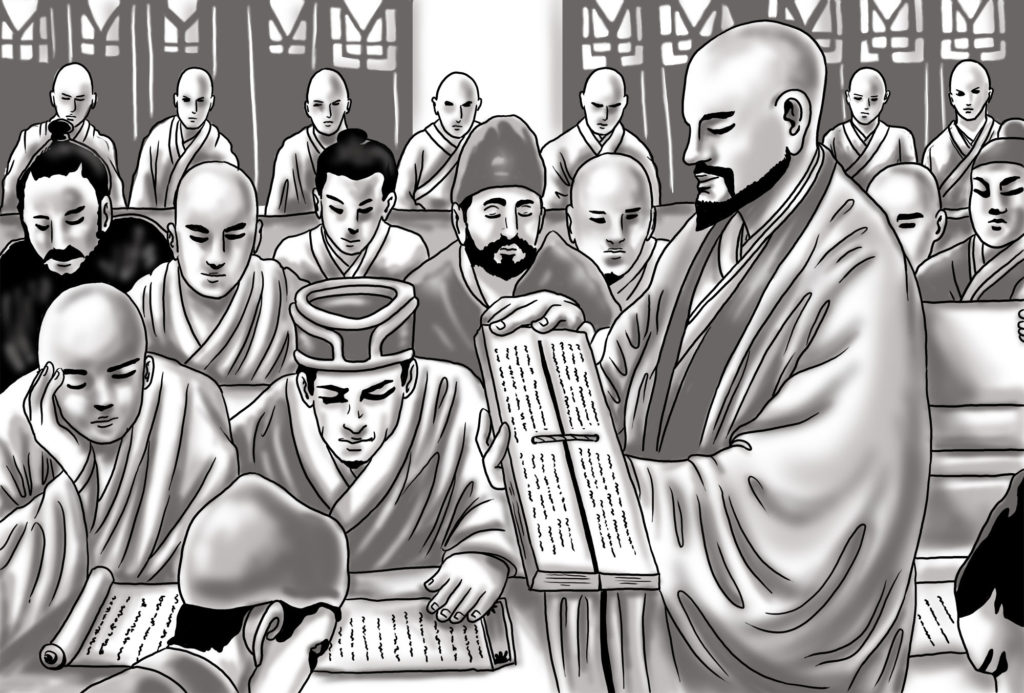
Nalanda University Founded in India
Around the 5th century, King Śakrāditya of the Gupta Empire built Nalanda Monastery in the north of Rajgir to offer to the Bhikshu Rājavajśa. Afterwards, the Kings that governed the area continuously expanded the building infrastructure of the monastery grounds and the university became the center of Buddhist learning in India.

Thothori Nyantsen
Lha Thonthori Nyantsen was the 38th King of Tibet. Buddhist scriptures among them the Kāraṇḍavyūhasūtra first arrived in Tibet during this King’s rule. This happened in a miraculous way, by the volumes falling from the sky on the roof of the royal palace. Though the King did not understand the purpose of the objects, he still kept them in a position of reverence.

Buddhism Enters Japan from Korea
In the year 552, the King of Korea gifted a golden bronze statue of Shakyamuni Buddha and Buddhist scriptures to the Emperor of Japan. This was the beginning of Buddhism in Japan.
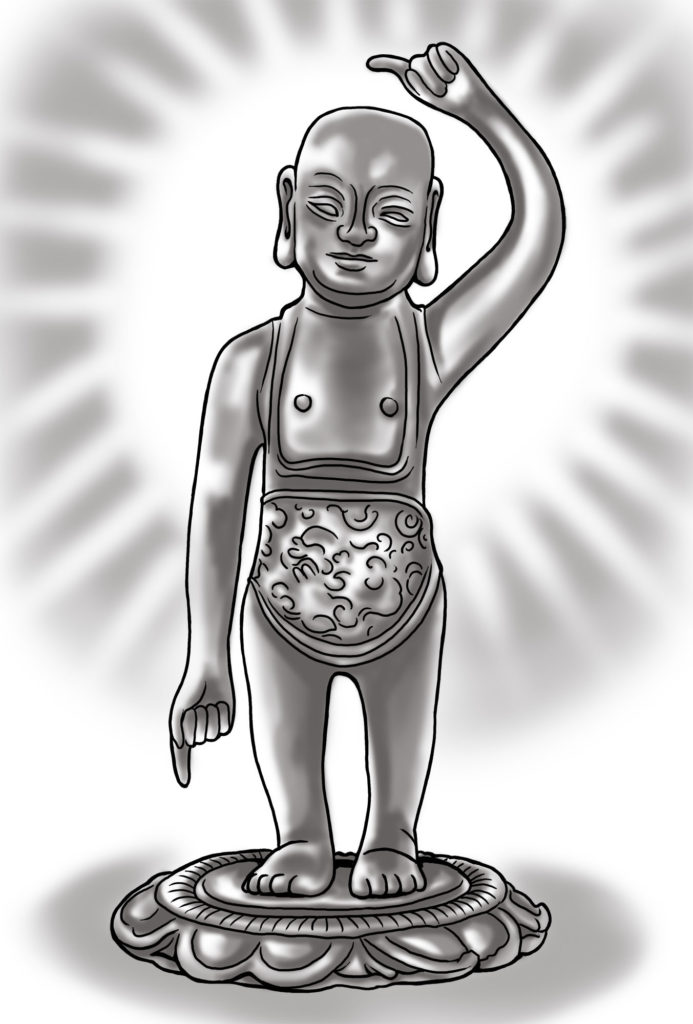
Peak of Chinese Buddhism During the Tang Dynasty
Xuan Zhang (602-664) was a monk during the Tang dynasty. He went to India to learn Buddhism and acquire Buddhist texts. His master was Śilabhadra of Nalanda University. Xuan Zhang was the greatest translator within the history of Chinese Buddhism and one of the four greatest translators in China.
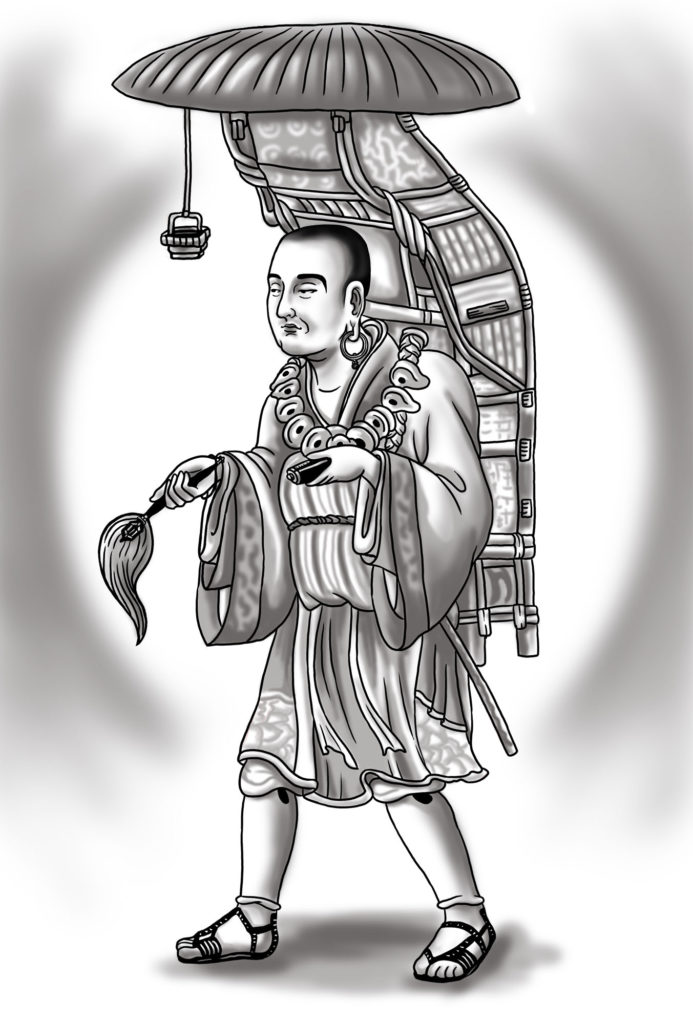
Songsten Gampo
Songtsen Gampo was the 33rd King of Tibet and traditionally credited with the introduction of Buddhism to Tibet and creation of the Tibetan alphabet and establishment of Classical Tibetan.

Thumi Sambhota
Thumi Sambhota is traditionally regarded as the inventor of Tibetan script.
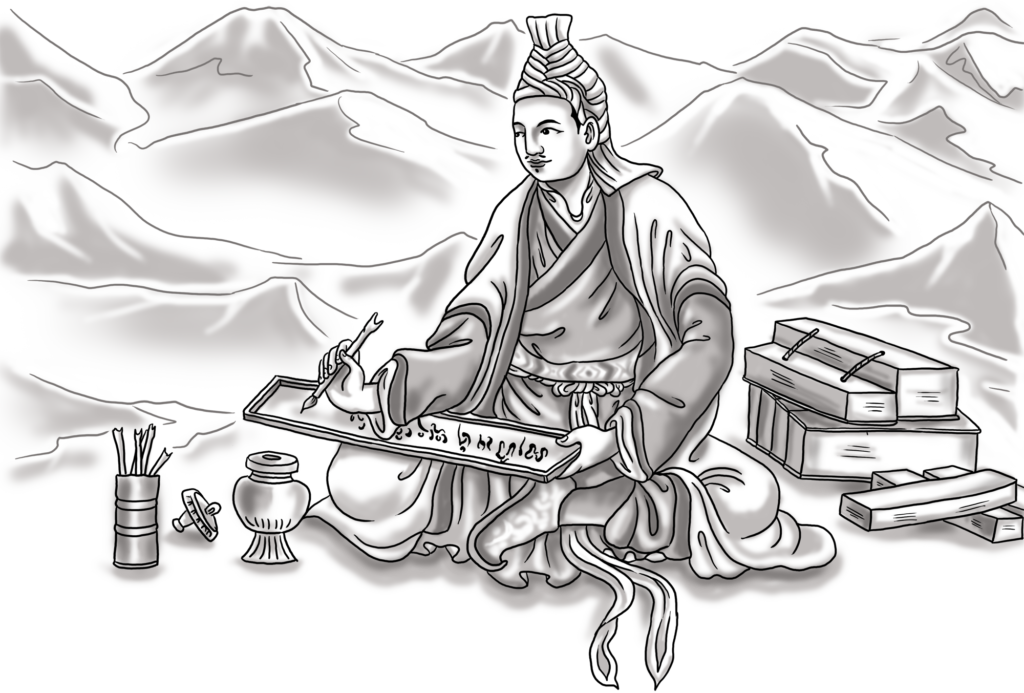
Trisong Detsen
Trisong Detsen (Tibetan: ཁྲི་སྲོང་ལྡེ་བཙན།), 37th King of Tibet. He ruled from AD 755 until 797 or 804. Trisong Detsen was the second of the Three Dharma Kings of Tibet, playing a pivotal role in the introduction of Buddhism to Tibet and the establishment of the Nyingma or “Ancient” school of Tibetan Buddhism.
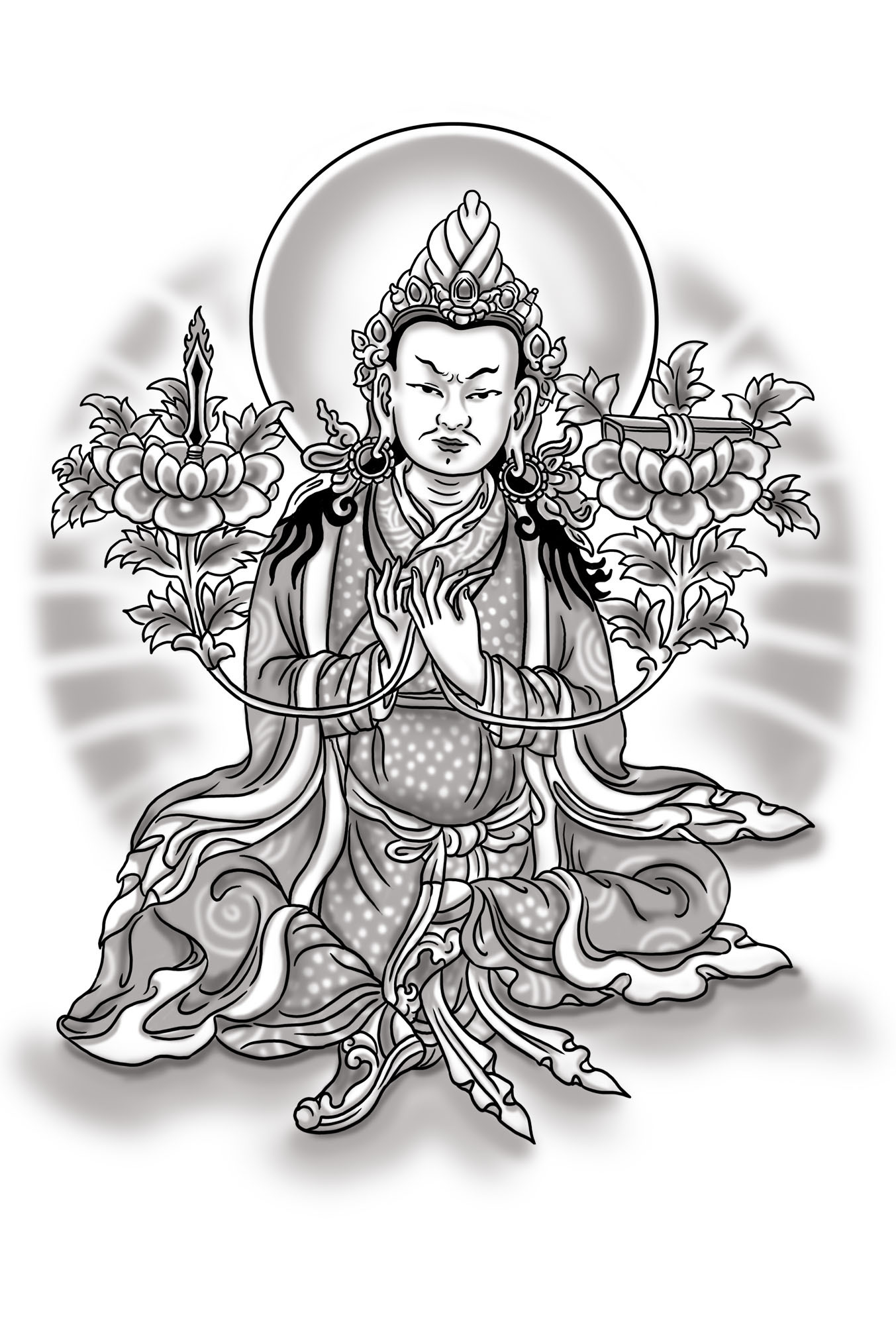
Vajrayana Buddhism Established in Tibet
Samye Monastery is the first monastery built in Tibet.
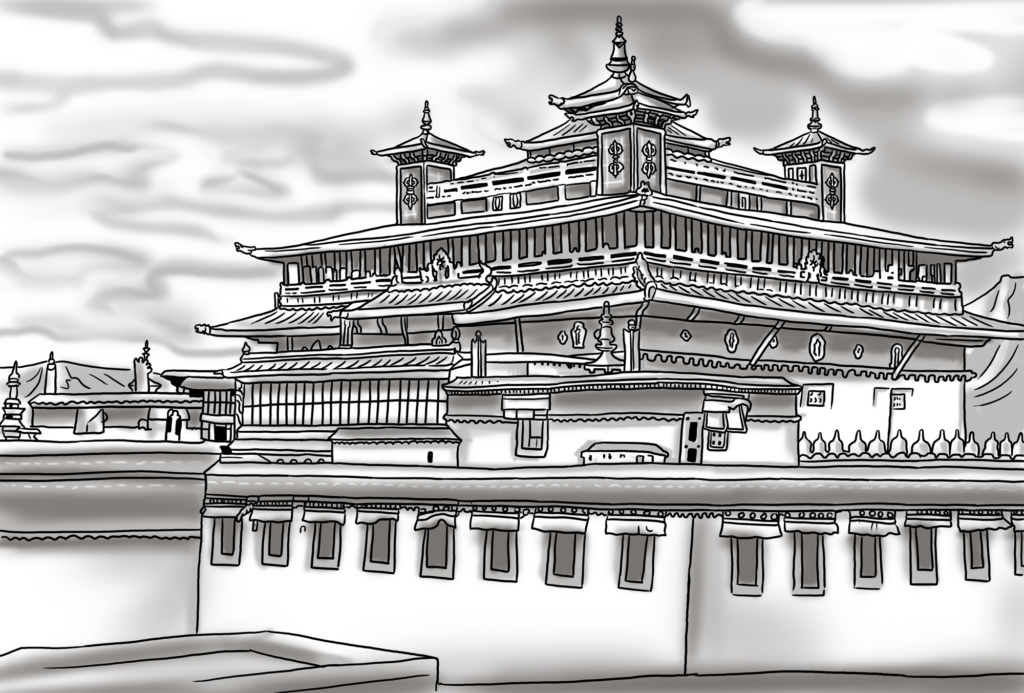
Nyingma School
Padmasambhava was a great realized practitioner, born in the west of India as a prince of the Uddiyana Kingdom. In the 8th century, Khenchen Bodhisattva suggested King Trisong Detsen invit Padmasambhava to Tibet and built Samye Monastery and taught Tibetan disciples Sanskrit, translation and Buddhism. Padmansambhava taught King Trison Detsen, many ministers and his consort Yeshe Tsogyal Vajrayana Buddhism.
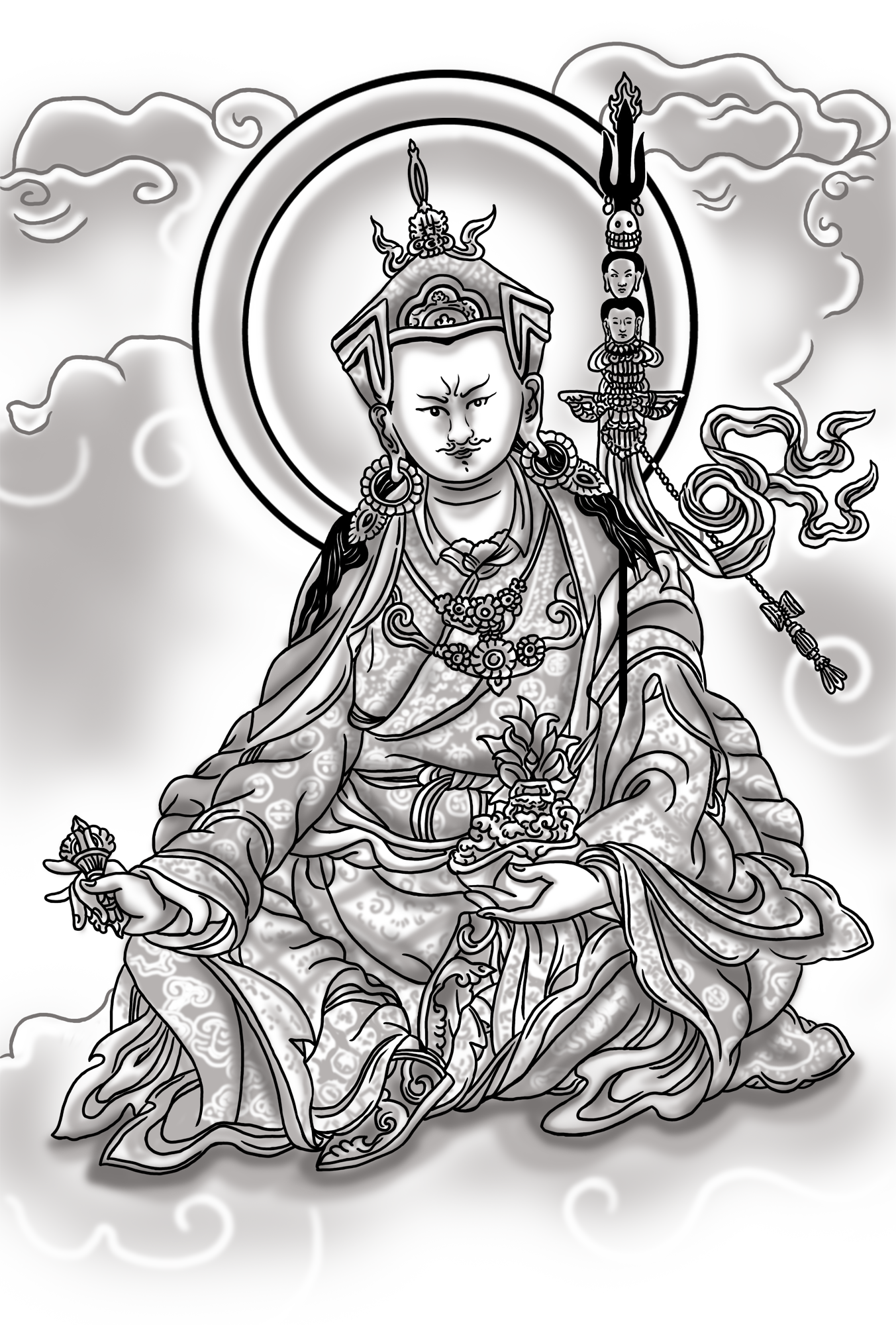
Vairotsana
Vairotsana was sent to India by Trisong Detsen to study with Indian panditas. He also travelled widely in China, Khotang, Nepal and Shangshung. Vairotsana was one of the greatest of Tibetan translators, one of the three main masters to bring the Dzogchen teachings to Tibet.

Ma Rinchen Chok
Ma Rinchen Chok is numbered as one of the twenty-five principal disciples of Padmasambhava. Rinchen Chok was also a senior disciple of Vimalamitra. Rinchen Chok was an important translator in the first wave of translations and was one of the seven monks ever to be ordained in Tibet by Shantarakshita.

Kawa Paltsek
Kawa Paltsek was one of the twenty-five disciples of Guru Rinpoche (Padmasambhava). He was one of the seven monks ordained by Santaraksita and became one of the greatest Tibetan translators in accordance with a prophecy by Guru Rinpoche.
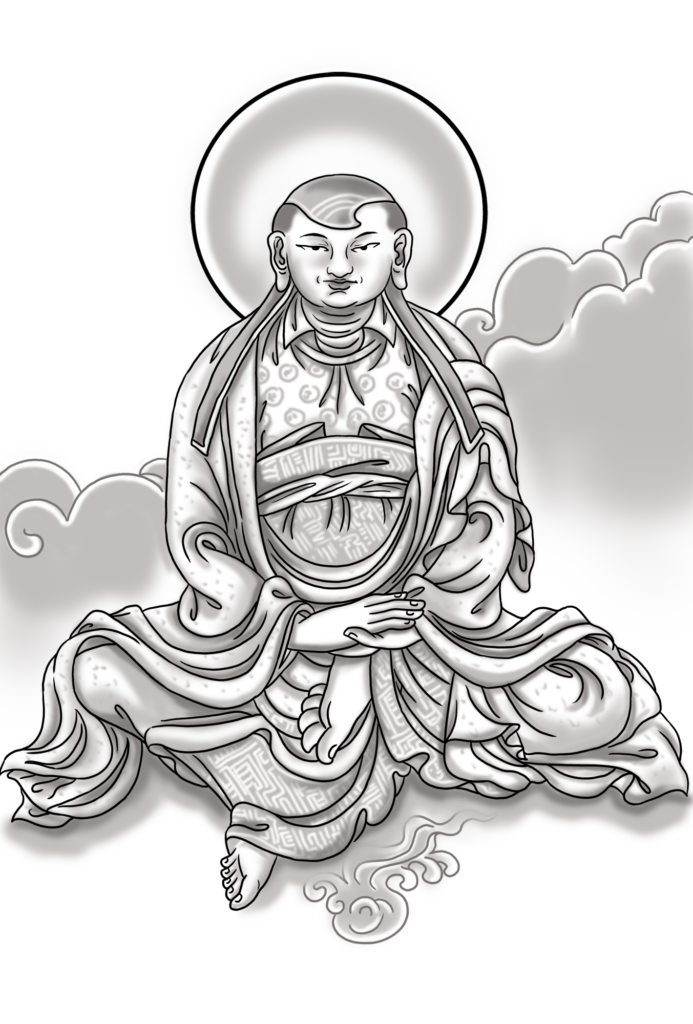
Nanam Zhang Yeshe De
A prolific translator of more than 200 texts and a disciple of Padmasambhava.
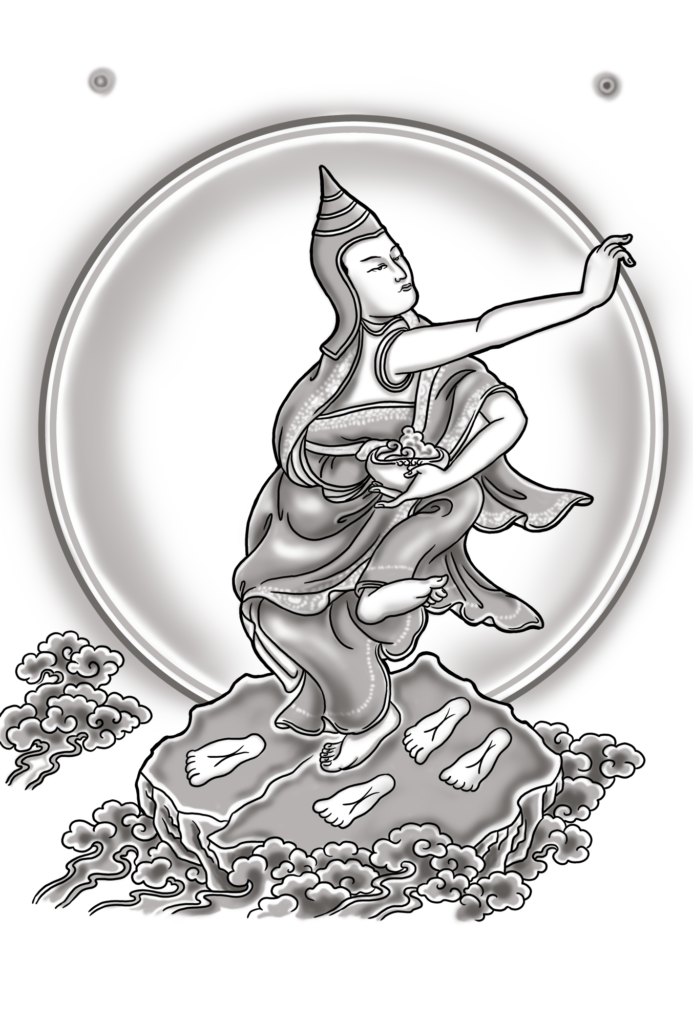
Tri Ralpacan
Tri Ralpacan was the 41st King of Tibet. Tri Ralpacan was a generous supporter of Buddhism and invited many craftsmen, scholars and translators to Tibet from China, Nepal, Kashmir. He encouraged Indian and Tibetan scholars to translate the Tripiṭaka, the Commentaries, and ancient Tantras into the Tibetan language.

Chinese Buddhist Canon Printed
In 983, Kai Bao Zhang publishing house in Chengdu, Szechuan completed the wood-carved printing plates for the first edition of the Chinese Buddhist Kangyur.
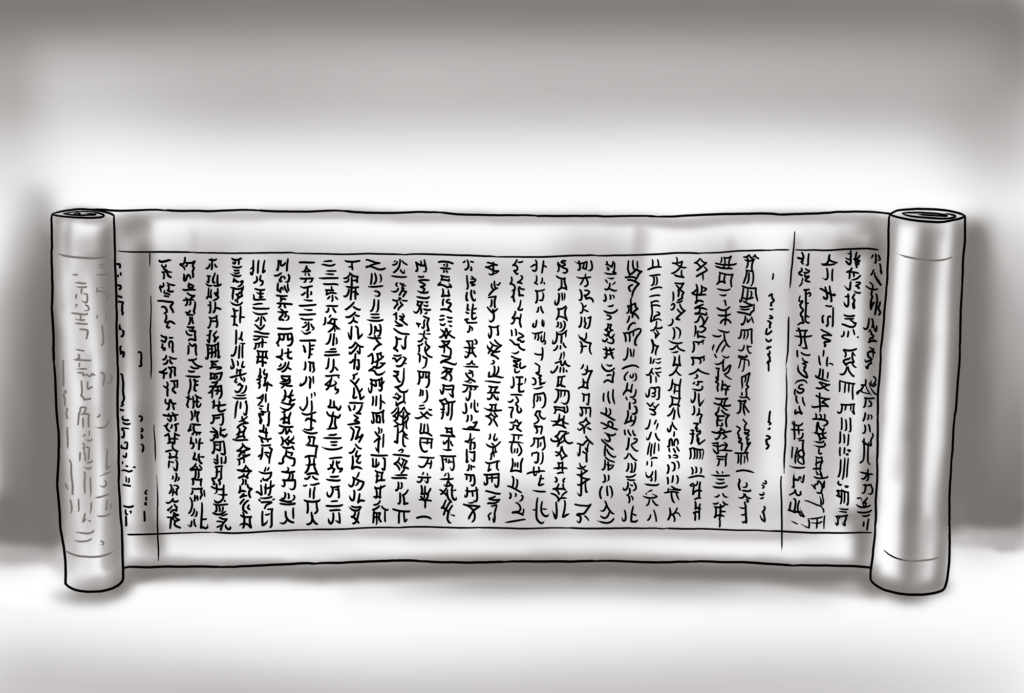
Sakya School
In the period of the Song Dynasty, the Ngari King Tashi Tseg sent Drogmi Lotsawa to India and Nepal to learn Buddhism and spread the mother branch of the teaching and practice lineage in Tibet. Drogmi Lotsawa established the Sakya school in Tibet.

Nalanda University Destroyed
Nalanda University destroyed. Demise of Buddhism in India.

Snar Thang hand-written Kangyur and Tengyur manuscript
Around 1312, Khenpo Chomden Rigpe collected Buddhist scriptures from different areas and used them to compile two sets of Kangyur catalogs in Snar Thang Monastery. After Khenpo Chomden Rigpe passed away, his disciple Orpa Losal compiled a set of Kangyur and Tengyur in 1315 and offered it to Snar Thang Monastery.
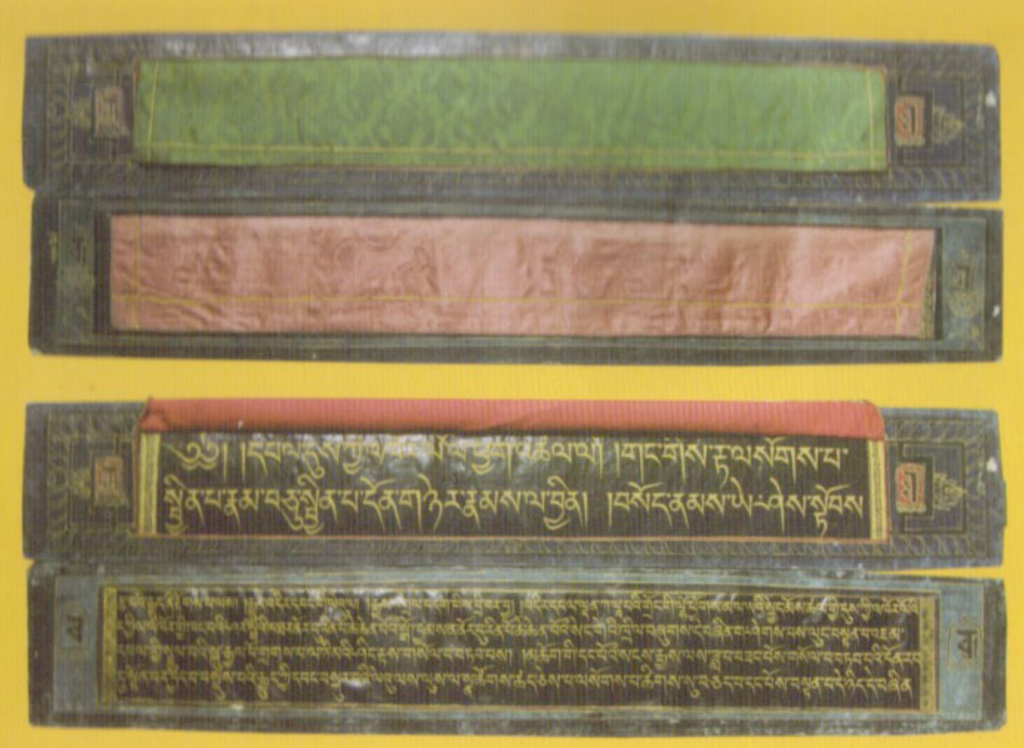
Tsal Pa Kangyur golden manuscript
When Tsal Pa Kunga Dorje was in office, he engaged Lochen Orten Rinchen to be the main proof-reader at Jamgon Tang Monastery to create a revised copy of the Kangyur written in gold and silver ink based upon the Snar Thang hand written manuscript. This copy was completed in 25 years from 1323 to 1348. There are a total of 260 volumes.
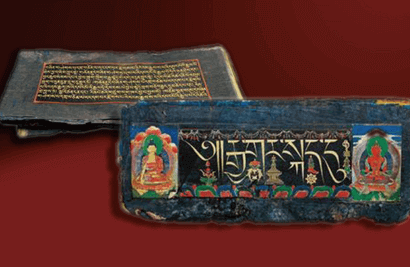
Yong le wood-carved Kangyur
At the start of the 15th century, as part of the purification rituals conducted for Emperor Yongle’s deceased parents aspiring for all sentient beings to be happy and free of suffering, Emperor Yongle charged the 5th Karmapa, Deshing Shekpa, to craft Kangyur wood printing blocks at Linggu Temple based on the Natang and Tsapa Kangyur hand-written

Lijiang wood-carved Kangyur
In 1608, Lijiang headman Karma Miphang Zhewang, followed the advice of the 9th Karmapa and started work in carving the Kangyur on the eighth day of the fourth month. The main proof-readers were the 6th Sharmapa Chökyi Wangchuck and the 5th Situ Chokyi Gyaltsen. The work took a period of 13 years, completing in the year 1621. There are a total of 109 volumes including the table of contents.
Ming Tianqi Emperor of the Yunan Nashi nationality supplied the funds for the project, to request the Tibetan Buddhist 6th reincarnate Chokyi Wangchuck of the red hat Karma Kagyu sect to be the main person responsible for compiling and proof-reading the print blocks and printing of the Lijiang Kangyur. The work was based on the Tsal Pa version of the Kangyur and took a period of three years (1623). This is the first copy of the Kangyur printed in Tibet.
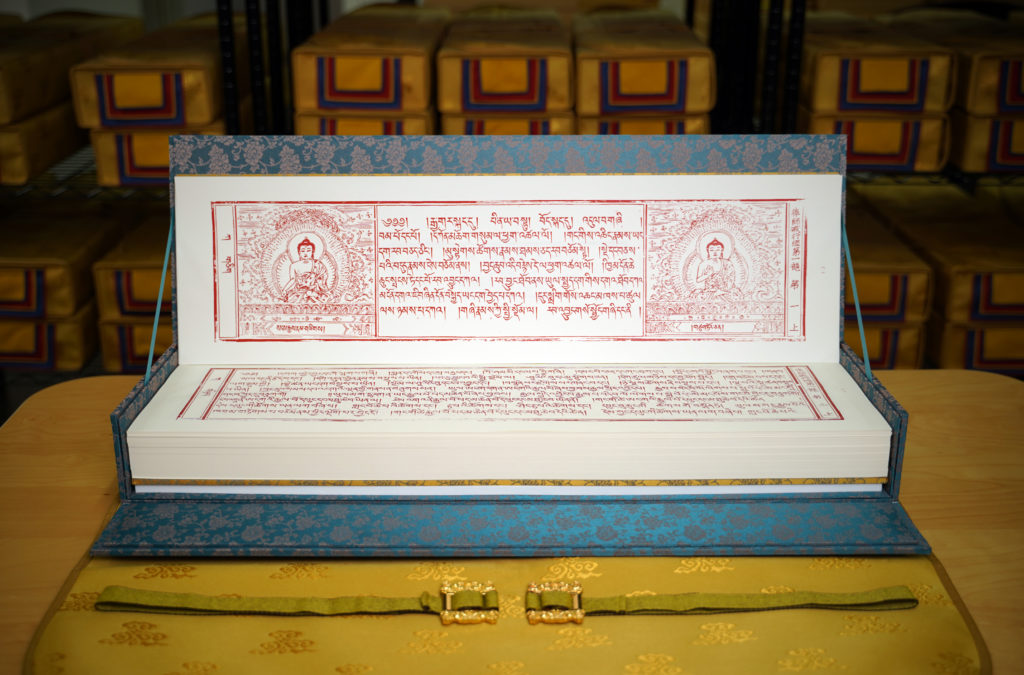
Beijing wood-carved Kangyur
Qing Kangxi Emperor ordered the prince of Heshuo county to be responsible for the project, Zhang Jia Hutu Ketu to be the main proof-reader. This version was based upon the Yongle and Wangli version of the Kangyur. The work was conducted at the Beijing Song Zhu Monastery. The project took 12 years to finish and was completed in the year 1700. There are a total of 107 volumes.

Nathang Kangyur
In the 12th year of the rabjung calendar (start of the 18th century), the 6th Dalai Lama Tsangyang Gyatso instructed Sangye Gyatso to begin carving the wood-block printing plates for the Narthang Kangyur based off the Tsalpa hand-written version of the Kangyur. When the work had progressed for 7 years, carving of the wood-blocks had reached the Prajnaparamita sutra in the 28th volume, the Dalai Lama was sent to China and Sangye Gyatso was poisoned. Thus, the progress of the project was halted. After a few years, the carving of the woodblocks was finally completed in 1731 with a total of 101 volumes.

Chone wood-carved version of the Kangyur
In the year 1721, Magzor Gonpo, the 11th king of chone, Domed ordered the printing of the Kangyur. It took a ten-year effort to complete, finishing in 1731. There are a total of 108 volumes.
Currently there is a copy of this version of the Kangyur in the American Parliament Library, Tokyo Library, Outer Mongolia, Russia and other countries.
1721Peking Tengyur
A version of the Tengyur was prepared in Peking in 1724 under the direction of Emperor Kangxi. It has 224 + 1 volumes.

Dege wood-carved version of the Kangyur
In 1729, the Khampa 42nd King of Derge Tenpa Tsering was appointed as the person responsible for the project. Panchen Situ Chokyi Jungney was the main proof-reader. This version was based off the Lijiang Kangyur. The work took 5 years to complete and finished in 1733. There are a total of 103 volumes. This version has very few errors and the order of compilation is considered very accurate. This version is treated as the model version of the Kangyur.

Dege Tengyur
In the fire snake year of the 12th Rabjung according to the Tibetan calendar (year 1737), Tenpa Tsering, the 42nd chief of the Dege Kham region in Tibet, presided over the publication of the Tengyur, in accordance with the instructions of the 30th Sakya Trinzin Jamyang Tashi Lhundrub. At the time of the publication, Tenpa Tsering mainly referred to the Tengyur written by Ga Anyen Dampa and Situ Chokyi Jungne, disciples of the Yuan dynasty teacher Phags-pa, and offered by the Karmapa. The Dege version of the Tengyur was handwritten with silver ink and includes newly collected texts. Tenpa Tsering passed away after the seventh volume of the Dege Tengyur was being carved. His son, Kunga Trinle Gyatso, continued to preside over the work of the publication. The publication took a period of seven years, completing in the wood mouse year of the 12th Rabjung according to the Tibetan calendar (year 1744), with a total of 209 volumes. Tsultrim Rinchen was then responsible for proofreading the Dege Tengyur and compiled the catalogue. Afterwards, an additional four volumes of miscellaneous texts and one volume containing the catalogue were prepared, bringing the total number of volumes to 213 volumes.

Narthang Tengyur
Narthang Tengyur in 225 volumes was created from 1741 – 1742. A set of the texts were offered to the Seventh Dalai Lama, Kalzang Gyatso. The wood blocks were kept at Narthang Monastery and unfortunately destroyed during the Cultural Revolution but new printing plates have been created from a surviving copy of the texts.
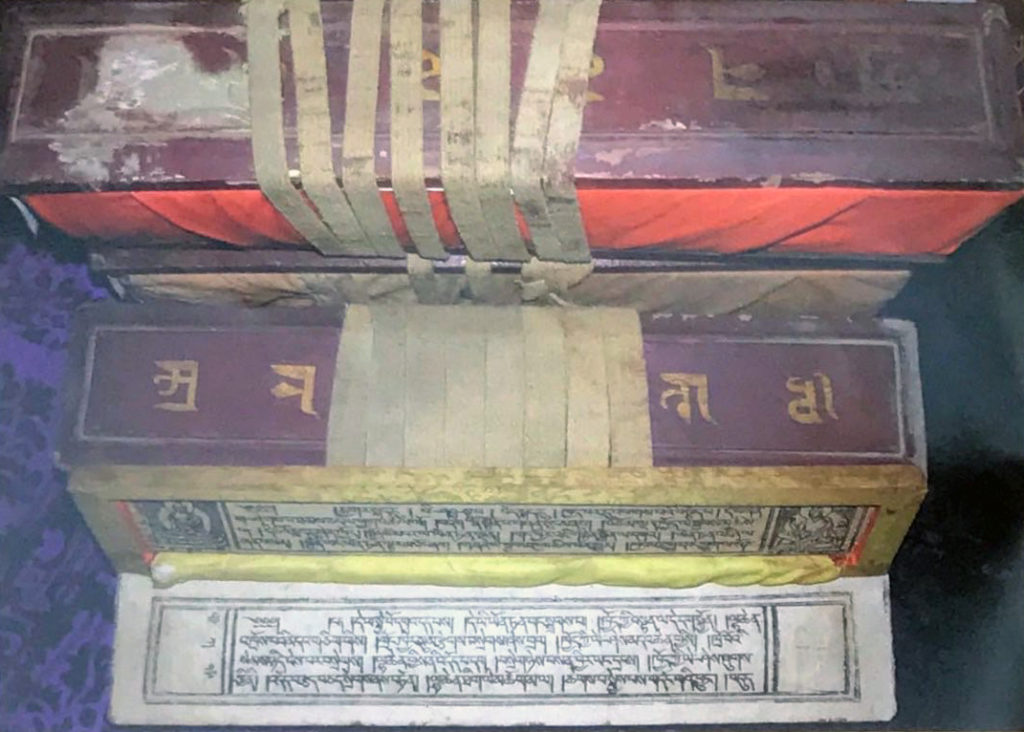
Chone Tengyur
Chone Tengyur was created in Chone, Amdo under the order of Prince Jamyang Norbu and completed in 1773. It was based on the Dege Tengyur and edited by Chone Lama Drakpa Shedrup. The catalogue was compiled by Jamyang Shepa Konchock Jikme Wangpo.
1773Khuree wood-carved version of the Kangyur
The Mongolian Khure Monastery used the Derge version of the Kangyur as a blueprint to carve the Kangyur in the 20th century. There are a total of 103 volumes in this version of the Kangyur. A copy of this Kangyur was consecrated at the Khure Monastery.
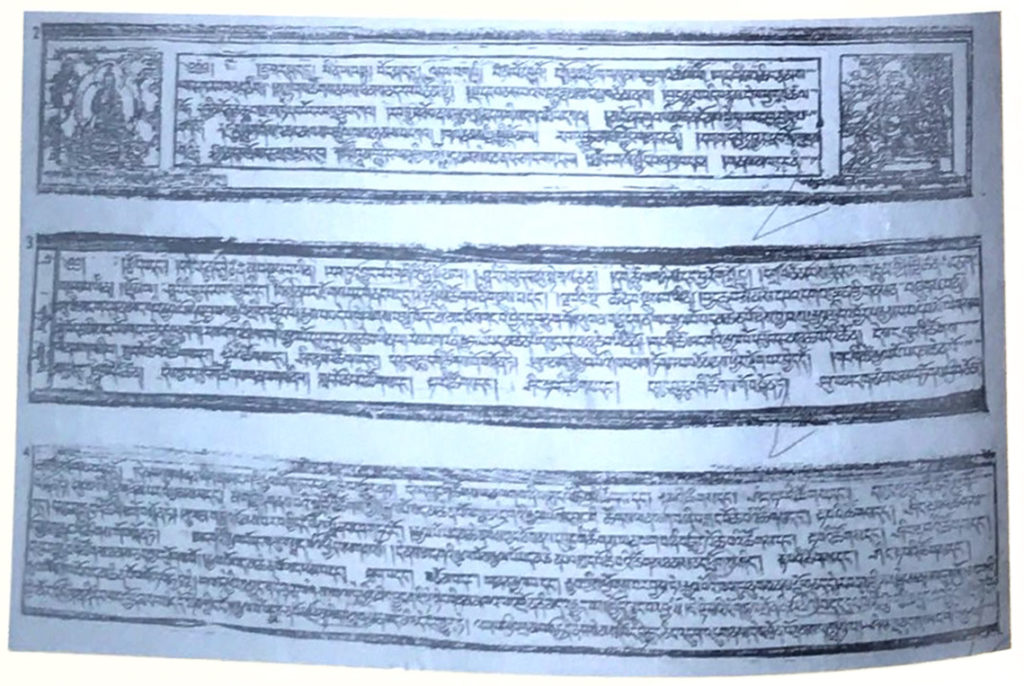
Lhasa wood-carved version of the Kangyur
From 1920-1934, carving of the wood blocks to print the Kangyur was commenced at Lhasa Himalayan Scripture Publishing House, under the guidance of Drikung Gojog Rinpoche, Radreng Rinpoche and Kunga Wangchuk.





